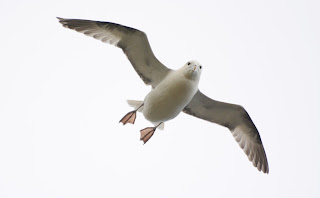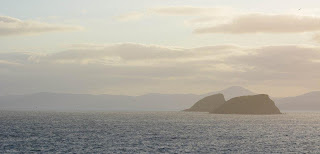Last weekend marked the start of the
Wash Wader Ringing Group’s summer trips. The ‘mini week’ started on Wednesday,
but I was unable to get there before Thursday evening. Luckily for me, I didn’t
miss much as the teams hadn’t managed to make a catch on Thursday morning.
During the summer trips, the team
is split between the Norfolk side of the Wash and the Lincolnshire side. I was
due to be part of the Norfolk team for this trip but on Thursday, I received a
call from Jacquie telling me to meet them on the Lincolnshire side that evening.
The Lincolnshire side had the better catch options for Thursday evening and
Friday morning so everyone had de-camped over there from Norfolk for the
evening.
When I arrived in Friskney I was
informed that everyone was out and about. Nets had been set in three different
fields and the team was split between the three. I joined base camp for Jacquie
and Steve’s team and was delighted to find Sally, who is one of the American
volunteers from the Delaware Shorebird Project, had come over to join us. I
later found that another American, Sheila, who had met us whilst we were
ringing on Slaughter Beach, had also come over for this trip. It was lovely to
see them both.
Sadly, none of the teams generated
a catch on Thursday night so on Friday morning, we re-grouped and headed out to
man the nets again, this time with a little more success. As we sat waiting for
some of the tens of thousands of birds that were in the air above our cabbage
field to settle in the catching area, we heard that Nigel’s team had made a big
catch of knot and bar-tailed godwit. Richard’s team was heading over to help
them so we decided to stay put. A few minutes later we were driving like the
clappers (well, after I had managed to stall Dave’s car a couple of times that
is) towards our nets that had been fired on a sizeable catch of (mostly)
dunlin. This is the first time I have ever run to a catch with the words ‘mind
the cabbages’ being shouted at everyone! As we were nearly finished extracting,
Nigel called requesting additional help to extract their birds so Steve, Rachel
and Francis swiftly departed in Dave’s car, taking half our bags and personal
kit with them.
Left with a relatively small team,
a ticking clock (all birds should be released within four hours of the time the
net is fired) and a lot of dunlin, Jacquie and I decided to ‘ring and fling’ one
hundred birds before setting up the processing team (for non-ringers, ‘ringing
and flinging’ is when you ring and age the birds and let them go straight away
without collecting any additional biometric data such as wing length and
weight). With the first hundred birds gone we started processing. I was the
scribe and it was at this point I realised that my glasses had been on the
dashboard of Dave’s car and were therefore at Nigel’s catch! Such is life. We ended
up processing one hundred birds, plus all the re-traps, with the rest being ringed
and released. We finished on over 500 birds, mostly dunlin and a couple of
knot. Nigel’s team caught approximately 850 birds. All in all, a great morning’s
work; the cabbages all survived intact and I was safely reunited with my
glasses back at the base!
That afternoon we headed out and
re-set the nets on two different fields (Richard’s nets still being in place)
for a catch attempt on Saturday morning before having the evening off. The one
night stay in Lincs had turned into two, which was fine for me as I had all my
stuff with me but slightly more difficult for those that had only brought an overnight
bag from the base in Norfolk. Clean clothes were not the order of the day!
On Saturday morning we were back
at base camp and I was sitting in the driver’s seat of Richard’s 4x4. As things
started to get interesting we were sent to try to twinkle a group of curlew
from a field a couple down from ours. I was slightly nervous driving the car as
I had never before driven a 4x4, but soon warmed up to it when we fired the
nets and had to race to the catch. This time, both Richard’s team and Nigel’s
team caught a small number of curlew, godwits and knot (approximately 30 birds
each). The processing was slightly less frenetic than the previous day!
After much discussion (and a
fruitless recce at Terrington), it was decided that the team would again stay
in Lincs and try for a catch on Wainfleet Island the following morning. As this
meant not needing to set nets that afternoon, a few of the Norfolk team took
the opportunity to nip over to Norfolk to collect their cars and belongings and
grab showers. The rest of us spent a pleasant afternoon relaxing and walking
the dogs before tucking into a lovely selection of curries made by Daphne and
Mike (and helpers).
So, Sunday was the first early
(ish) morning that we had on the trip and by 05:30 we were all piled into cars
and on our way to Wainfleet. After a 20 minute walk with all the kit and an
efficient net set we were soon settling down under the tarpaulins to wait for
the tide to push the oystercatchers off their roost site in Friskney and round
to our catching area. As the snoring started, we waited… and waited… and waited
for the tide that never came. Sadly, the weather had caused it to cut and after
a failed attempt to twinkle some sanderling into the catching area, we gave up,
picked up the nets and headed back to base for a quick breakfast, clean-up of the
hall and home.
I always thoroughly enjoy my
trips to ring with WWRG and this time was no different. As always, the company is
what makes the trips so enjoyable and it was fun to be one big team for this
trip. It was also good to experience a ‘Lincolnshire side’ trip, even though I
did miss the showers and comfortable beds that the Norfolk base has to offer! I
am already looking forward to the main week in a couple of weeks’ time… and who
knows, I might even remember to take some photos on that trip!



































































